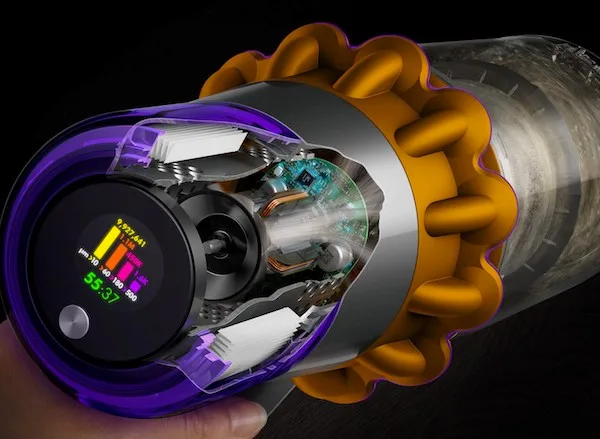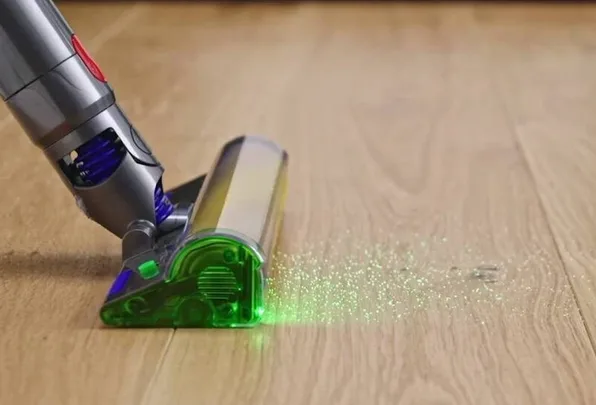Dyson vacuum cleaners have become a bit of a cult purchase over the last ten years. Even if you’re the proud owner of one, you’re probably lusting after whatever new model just launched – the latest being Dyson v15 Detect, and trust us when we say there is plenty to lust after here.
The Dyson v15 Detect is essentially introducing detection technology. There are two elements to this – a filter system that now tells you the particle sizes you are vacuuming up, with each size correlating to particular nasties like allergens, dirt and more, plus a laser on the front of the vacuum that shows you exactly what is covering your floors.
I received a loan unit to road-test the Dyson v15 Detect, and I have to admit I was skeptical about the laser – wouldn’t it just be showing me what I could already see? Did we really need a laser on the front of our vacuums to tell us what we can see with our own eyes?
But in use, the laser was probably the highlight of the device for me. I’m definitely a lazy cleaner when it comes to my own house, and will power-vacuum through rooms to get it over and done with. I always assumed speeding over my hardwood floors would do the job fine, and to a degree it does – the laser showed me the dirt on my floors, then on return, I could see most of it was gone. But what it also showed me was all the nooks and crannies I wasn’t catching in my speedy clean.
Under chairs. The area underneath my lounge. Underneath the coffee table. All COVERED in dust and dirt. It was honestly quite revolting to see, so I took some photos to show you what I mean.

See? When you have a visual on everything you miss when cleaning up, it definitely makes you want to try a bit harder. For me, especially so – I’m an allergy sufferer and pollens, dust and dust mites set off my hayfever big time. Being able to see all the patches of dust I’ve been missing means I feel my home is way more dust-free (ish).
The other detection element is the technology in the filter, which analyses what you’re vacuuming up in record time. It’s called a piezo sensor, and it analyses 15,000 times a second, which is crazy to think about. It’s looking for size of the particles, which it does by measuring their acoustic vibrations.

Yellow particles are pollen and allergens, like pet hair, which can often hang around spaces even when the pet is gone. For example, my parents dog comes to stay at my house every so often, but she hasn’t been in my home for weeks. Still, I saw plenty of dog hair on our floors and couch via the laser, and plenty come up on the display of the Dyson v15 Detect.
Orange particles are microscopic dust and (ew) skin flakes. These can irritate our noses and throat, especially if we’re prone to hayfever. But it’s the pink particles that freaked me out the most – dust mites. I’m so, so allergic to dust mites and constantly battle with sneezing and eczema. It’s really comforting (and a little alarming) to see the pink bar fill up as you vacuum carpets, mattresses and lounges.
There are other benefits to the Dyson v15 Detect, like a 60 minute run time at full capacity, and an intelligent response that changes the intensity of vacuuming depending on dust/dirt level, or floor type. Both very useful additions, but unlikely to be the key to making you invest in a brand new machine.
Still, as an allergy sufferer, this is definitely a device I’d invest in. I feel the Dyson v15 Detect is geared more toward people who struggle with allergies, more than those who just want a clean house. Obviously it will do both, very well – but as fellow allergy sufferers know, a dusty house is more than just unpleasant to live in, it literally affects your health.
The Dyson v15 Detect retails at $1,399 for the Total Clean model, and $1,449 for the Absolute Extra model, which also comes with a HEPA filter which can filter out even smaller particles like pet dander and diesel soot, as well as a floor dock.










